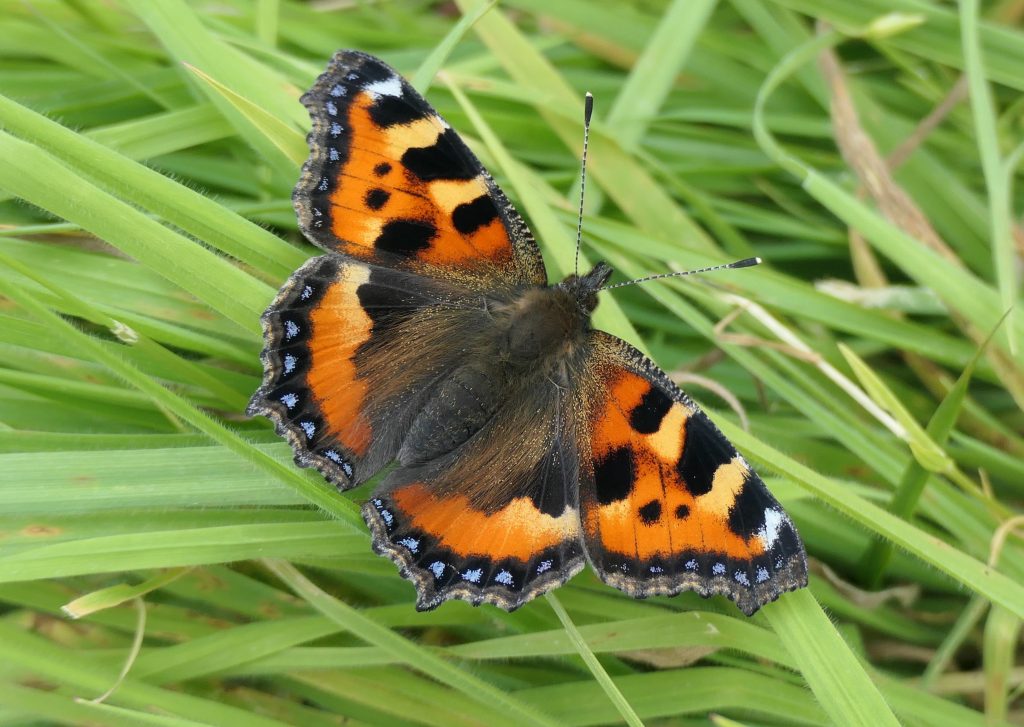Suffering from butterfly deprivation…empty grasslands… I’ve passed several (Buddleia) on my dog walks, but haven’t seen a single butterfly on any of them…A walk from Potter Heigham to Hickling Broad yesterday, limited butterfly activity…Ringlet seen on a transect walk at Foxley yesterday, very little else recorded apart from a few Speckled Woods…Weather has been unkind to us at our last 2 events the Wheatfen Swallowtail Day and Wild About Mannington. A Swallowtail put in a brief appearance at Wheatfen…
Here are a few comments harvested from social media reporting on butterfly populations in England during June 2024.
My experience in Ireland has been empty nettle beds, wingless skies, thin populations of some of our commonest butterflies and peering at the best habitats in Ireland to pick out a flicker of butterfly colour.

What’s wrong?
Let’s consider the weather. May 2024 was described as the warmest May on record by the Irish Meteorological Service. This surprised me. I wonder if night-time temperatures played a role in this finding. June, however, was described as cool, dry with the temperature below average nearly everywhere. All available sunshine totals were below their long-term average.
It remains cool in early July, with no upturn in temperatures predicted as I write on 5 July. Today we are looking at temperatures between 14 and 17 Celsius.
Is it just a case of below-par weather?
That’s unlikely.
It is certainly correct that our butterflies are strongly influenced by weather conditions with emergence greatly delayed by prolonged cool conditions. The sunny May and June saw the Silver-washed Fritillary begin to emerge on 21 June. We have not recorded it yet (as of 5 July). No new Brimstone has yet been recorded.
However, there appears to be an issue with our Vanessids: Small Tortoiseshell, Comma, Peacock, and Red Admiral. There are very few records of these butterflies this summer, in any life form. Between 16 May and 5 July, we have had four sightings of the Small Tortoiseshell, all singletons. Between 9 May and 5 July, two Commas were seen by Michael Gray on 3 July. We have not had any record of the Peacock since 31 May. Up to 5 July, only 20 Red Admirals have been reported to Butterfly Conservation Ireland’s recording scheme. These species breed on nettles and some parasitoids affect all four species. Has there been a peak in a parasitoid that has reduced populations? Has there been more than one factor impacting the butterflies? The wasp Phobocampe confusa for example, parasitises Small Tortoiseshell, Peacock and Red Admiral and probably the Comma.

The cool conditions cannot delay the emergence of these species indefinitely. When they emerge, we might understand the nature of any impacts on their populations. All these species enjoyed abundance in 2023, especially the Small Tortoiseshell and Comma. Perhaps we are seeing a crash in 2024.

When cool conditions occur during a species flight period, such as during the Marsh Fritillary’s flight period in May and June this year, its flight period can extend later into June and into July, as it has in Lullybeg this year. In 2024 the Marsh Fritillary recorded flight period in Lullybeg has extended from 19 May to 3 July. In 2023, when we had a sunny May and June, the butterfly’s flight period was from 16 May to 22 June. In cool weather, the butterfly rests deep in vegetation waiting for suitable weather. Despite being typically short-lived, the adult Marsh Fritillary can sit out cool weather for two weeks, possibly longer, if needed.

Most of our butterflies are adapted to cool weather, but the adults thrive in warmer weather allowing them to feed, disperse, find mates and lay their eggs. Prolonged bad weather damages populations which rebound quickly in years with better weather.
Provided we are looking after their homes.

